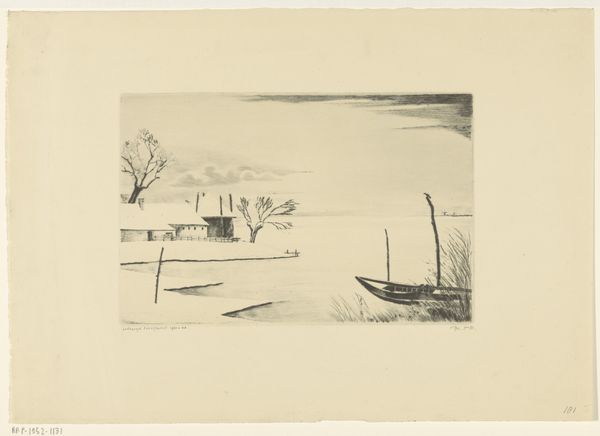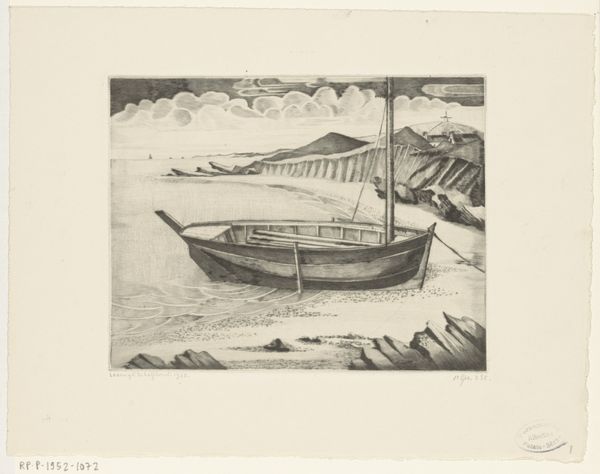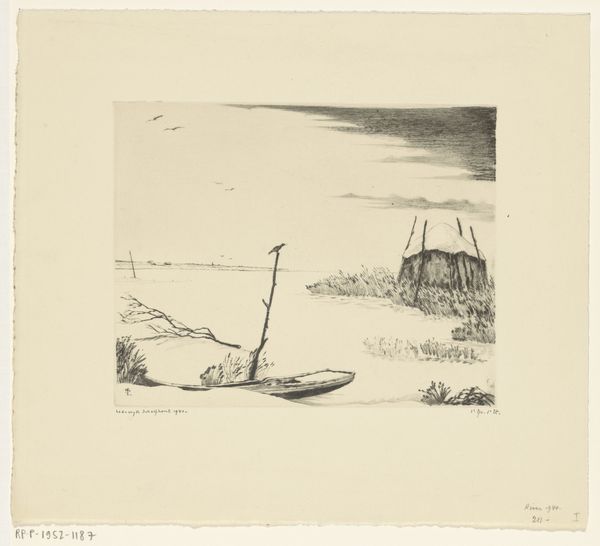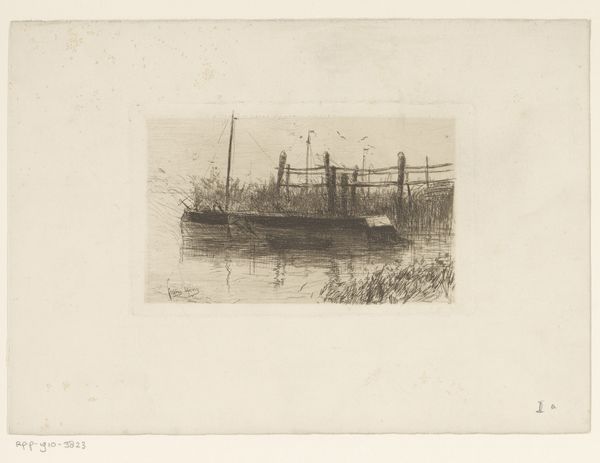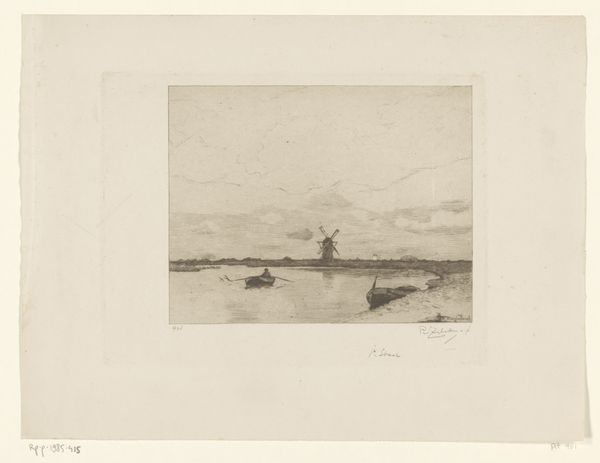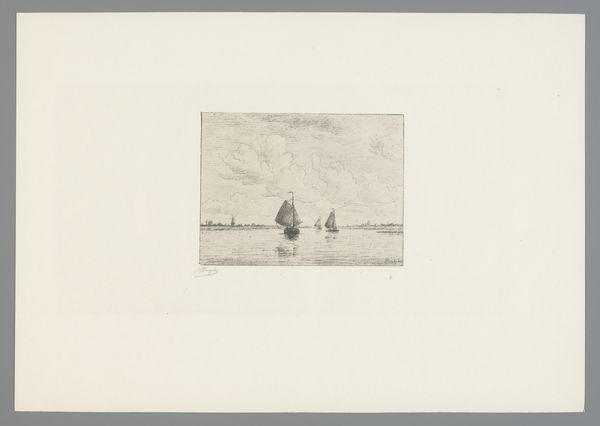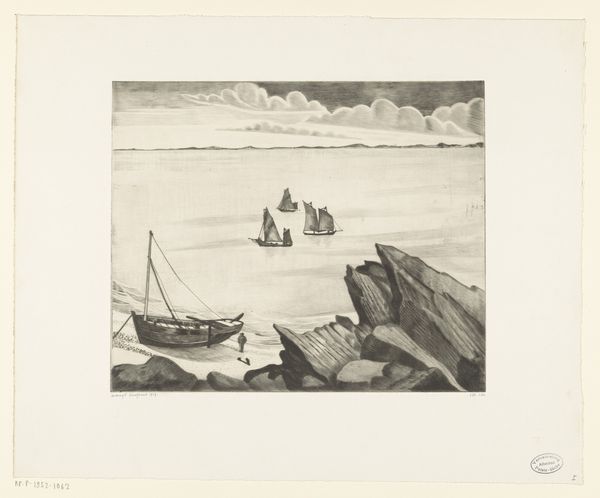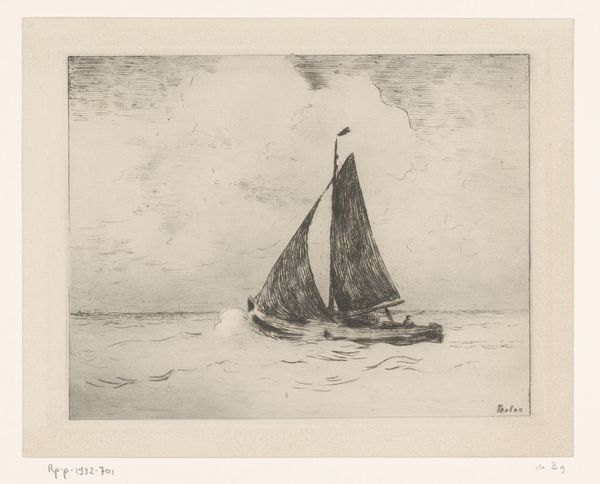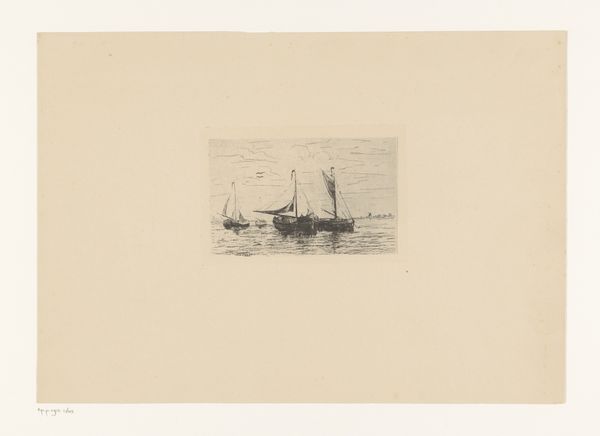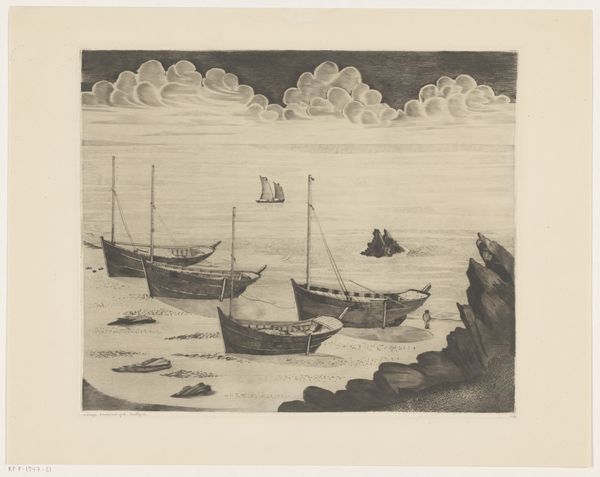
print, etching
#
lake
#
dutch-golden-age
# print
#
etching
#
landscape
#
realism
Dimensions: height 120 mm, width 158 mm
Copyright: Rijks Museum: Open Domain
Curator: What a deceptively still print. There’s almost a meditative quality. Editor: Indeed. We're looking at Lodewijk Schelfhout’s "Veenplassen bij Kortenhoef," or "Peat Pools near Kortenhoef," created in 1936. It’s currently held in the Rijksmuseum collection. Curator: It strikes me as very fragile, almost ephemeral. The minimal line work captures a vast stillness. The tonal range created with the etching process evokes quiet reflection. I feel a certain melancholic quality to the work. Editor: The composition is fascinating in its own right. Consider the artist's careful deployment of etching, to highlight not just the idyllic lake scene, but to record labor in the Dutch landscape and the technologies associated with it. The textures achieved on the metal plate directly reference processes tied to natural elements and their manipulation. Curator: You bring up such interesting points, particularly on the subject of texture. Looking at it again through this lens, the etched lines that describe the reeds versus those depicting the water reveal more nuanced and even contradictory details. How can industry be implied when the materiality is that of a delicate landscape print? The scene includes boats, thatches, and other evidence of human labor, embedded subtly. The presence of that solitary bare tree underscores not only nature’s resilience but its exploitation. Editor: Exactly, Schelfhout captures that inherent tension beautifully! His use of printmaking as a medium reinforces this connection: its accessibility as a mode of reproduction allows for broader circulation. I believe that it brings into focus questions around ownership of the land, as it becomes both an object of beauty and also a record of agricultural change. Curator: That perspective is very intriguing, focusing on production over form. It does deepen the narrative. Editor: Ultimately, regardless of how we approach the work, both methods underscore the delicate complexity within this apparently straightforward landscape, wouldn't you say? Curator: Agreed. It has a quietness that rewards sustained attention.
Comments
No comments
Be the first to comment and join the conversation on the ultimate creative platform.
